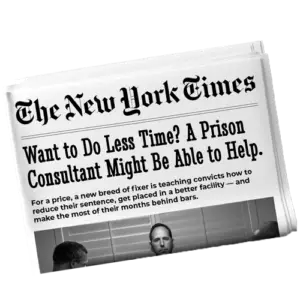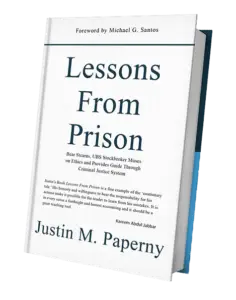I recorded that video on a trip to Oahu for my wife’s birthday. I had just a few minutes before dinner, but I knew I needed to get the message out—because what I was about to share had already changed someone’s life.
This wasn’t guesswork or empty talk. One defendant consistently documented his progress from inside—real effort, week after week. When it came time, the judge saw it and granted a resentencing to time served. He walked out.
If you’re trying to get home sooner—and want the judge to take that request seriously—steal this idea and start putting it on paper.
Most Defendants Make the Same Mistake
After sentencing, most defendants say something like, “Your Honor, I’ve learned from this. I’m going to change. I have plans.”
Judges have heard it all before. They’ve seen those promises break down. They’ve signed off on reports that say “no follow-through.” And the truth is, most of those promises go nowhere—because the defendant never does anything with the time.
Instead of building a new record, they wait. They play pickleball. They run the track. They tell themselves they’ll get serious later. And by the time they think about sharing progress, it’s too late. The judge has moved on. The probation officer already filed the report. The Bureau of Prisons already assigned their score.
Use the Time—and Share It the Right Way
The person in our community who earned a time-served resentencing didn’t ask the judge for anything—at first. He didn’t send a letter asking for early release or redesignation. He didn’t try to argue that he’d done enough.
He just shared the work.
He sent in book reports that showed what he was reading—and what he was learning from it.
He described how he was rebuilding relationships with his family.
He wrote about how he was preparing to repay victims.
He kept records of every class he completed, every program he joined, and how each one connected to his goals after release.
He didn’t try to sound polished or impressive. He listed exactly what he did, why it mattered, and how he stayed consistent. By the time his lawyer filed under the First Step Act, the judge didn’t need to guess—he already had the proof in front of him.
That’s Why It Worked
The judge didn’t feel like he was being worked. No one begged for a break. The file showed steady effort, and that was enough to take it seriously.
That’s the part most people miss. They wait until they need something, and then they try to get the judge’s attention. They ask for a transfer, for early termination, for compassionate release—but they’ve never sent a single page showing what they’ve done since sentencing.
The result? The request looks self-serving. The judge feels used. And the answer is no.
Here’s What to Do Instead
If you’re already in prison—or preparing to surrender—steal this idea. Use your time for something that leaves a paper trail. And then share it with stakeholders the right way.
That doesn’t mean flooding the court with updates. It means being thoughtful and consistent. You’re not asking for a shorter sentence. You’re showing the work.
- Keep a journal.
- Write reports on what you’re reading and learning.
- Describe how you’re preparing to live within the law.
- Build a reentry plan that includes specifics on housing, employment, and community support.
This is the exact strategy Michael Santos laid out in the Release Plan Workbook, which he donated to thousands of people in federal prison. That workbook set the foundation for what the BOP now expects from those seeking early placement or program eligibility.
And if you want to go further, publish your release plan and personal progress at PrisonProfessorsTalent.com. It creates a verifiable record—something judges, probation officers, and BOP staff can review on their own terms. You’re not selling anything. You’re just showing the truth.
The person who got time served didn’t wait until he needed a favor. He spent months showing the judge what he was doing. That’s what got the judge’s attention.
If your judge looked at your file today, would they see anything besides your conviction? Or would they see proof that you’ve used the time to do something different?
Join our next webinar on Wednesday at 11am Pacific / 2pm Eastern, or schedule a personal call. We’ll show you how to document what you’re doing so judges, probation officers, and case managers don’t have to guess. This strategy has helped others come home early—make it work for you.
Justin Paperny



